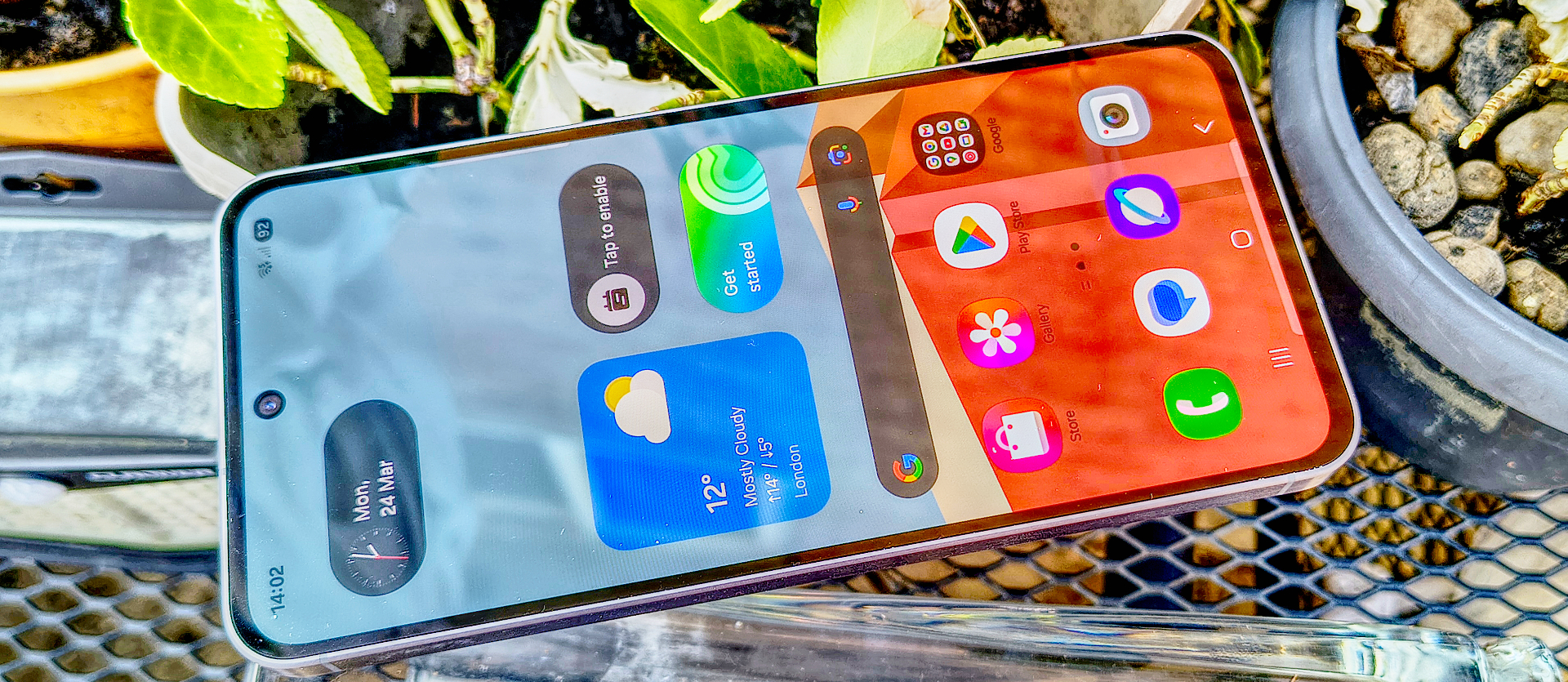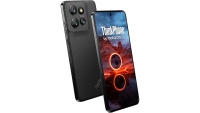TechRadar Verdict
A phone that slides into the same niche as the Motorola ThinkPhone 25 but delivers more performance and even better construction quality. Unless you need extended battery life, the A56 might be one of the best phones available for an outdoor lifestyle.
Pros
- +
IP67 without rubber plugs
- +
Powerful SoC
- +
Stunning OLED display
- +
Six years of updates
Cons
- -
Not inexpensive
- -
No wireless charging
- -
Only 128GB of storage
Why you can trust TechRadar
Samsung Galaxy A56 5G Enterprise Edition: 30-second review
The new Samsung Galaxy A56 5G Enterprise Edition is an unfortunate arrival for those who bought Samsung’s previous A55 and even the Galaxy S25 in the past year.
Its higher specification, combined with a similar price point, makes it a competitive option, especially if the budget for a premium device isn’t acceptable.
At first glance, the A56 is remarkably similar to the phone it replaces, the Galaxy A55, which has a similar size, weight, and battery capacity. It also has a three-lens camera cluster on the rear, and the size of these sensors is the same.
That said, in all the inner workings, the A56 has upped its game, and in some places considerably.
It sports a marginally bigger screen, a more powerful SoC, a better GPU and faster wired charging. However, Samsung doesn’t support wireless charging, even if the battery can recover 68% of a charge in only 30 minutes over USB-C.
The status of Enterprise Edition is due to this SKU having 8GB of RAM and 128GB of storage, making it at least £100 cheaper than the standard model with 256GB of storage.
The other reason I’m covering this device is because it also has rugged credentials. It is rated for IP67 dust and water resistance and can survive being submerged for 30 minutes in up to a metre of water. Similarly, the display is protected by Corning Gorilla Glass Victus+, enabling it to handle calamities more easily.
It all comes down to what expenditure you would consider fits your budget and the region you are buying this phone for. For some customers, it may seem highly affordable, whereas, for others, it seems a bit more expensive for a phone that isn’t sold as being premium.
What the A56 offers is rugged phone advantages but with a daily driver form factor, making it suitable for those who work outdoors most days. And it’s certainly a strong candidate for our best-rugged phone round-up.
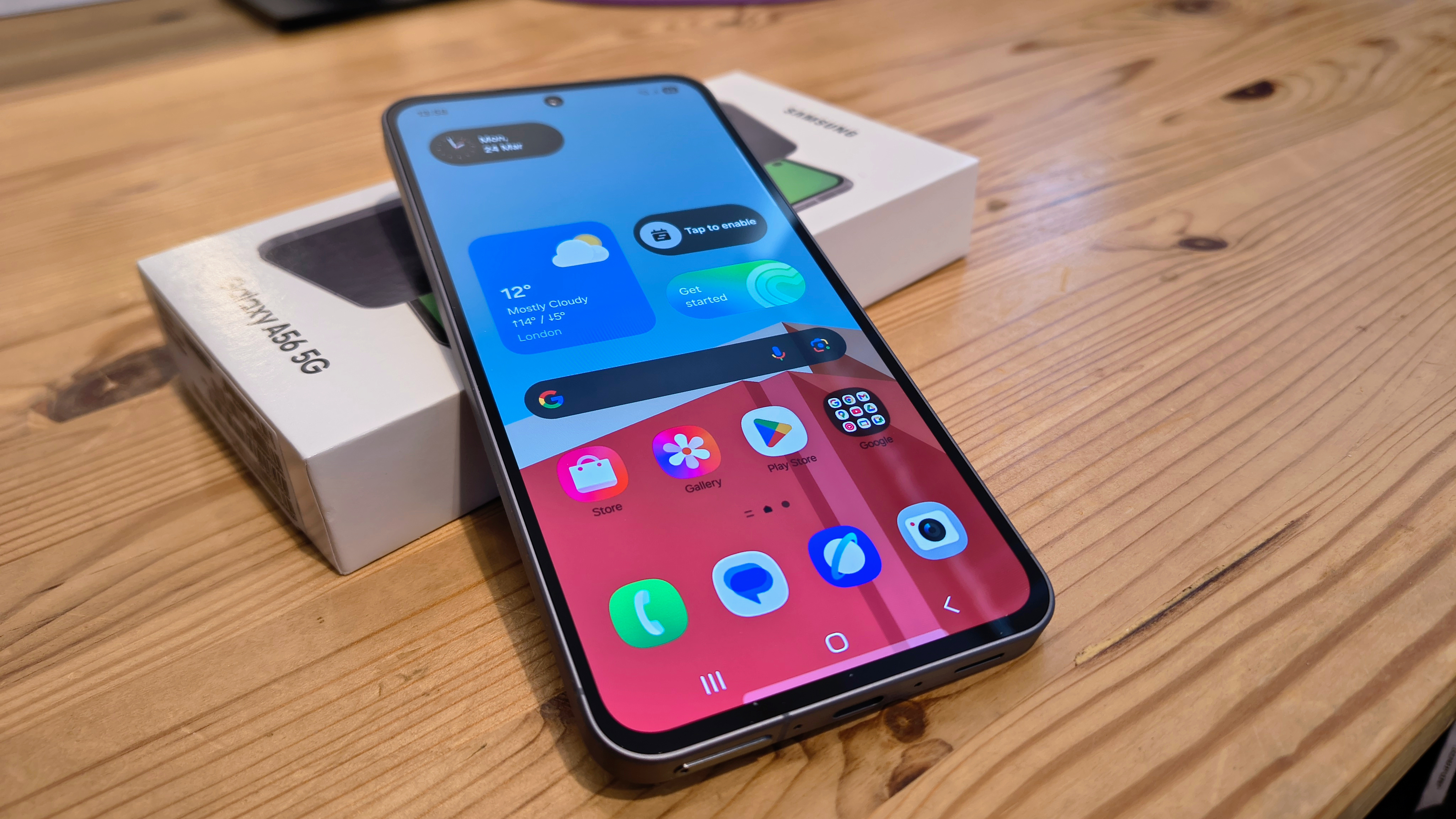
Samsung Galaxy A56 5G Enterprise Edition: price and availability
- How much does it cost? $499/£460/€479
- When is it out? Available now in Europe and Asia, USA later
- Where can you get it? Available outside the USA from online retailers
Directly from Samsung, the Galaxy A56 5G Enterprise Edition is £459 in the UK.
At this time, this Enterprise model hasn’t appeared on the US website, though it is possible to get the Latina unlocked model, which comes with 256GB of storage and 12GB of RAM for only $435 if you use Tmobile, Mint or Metro PCS.
Officially, it will become available in the USA later this year and will have an MSRP of $499.
This device is also available throughout Europe, and the German version of the Samsung website is offering it for €479.
There are three basic variants of the A56, including the one with 128GB that Samsung has designated as the Enterprise Edition. The most common model has 8GB of RAM and 256GB of storage, and there is also a high-end option with 12GB of RAM and 256GB of storage.
Each SKU comes in all four colours: Pink, Olive, Graphite and light.
These price points put the A56 in direct competition with the Motorola ThinkPhone 25 in Europe (it’s not sold in the USA), another rugged design that looks like a normal phone.
It’s more expensive than the Samsung Galaxy XCover7 (£274) and the Nokia XR21 (£403.75), but the specifications of those devices aren’t anything like the Galaxy A56.
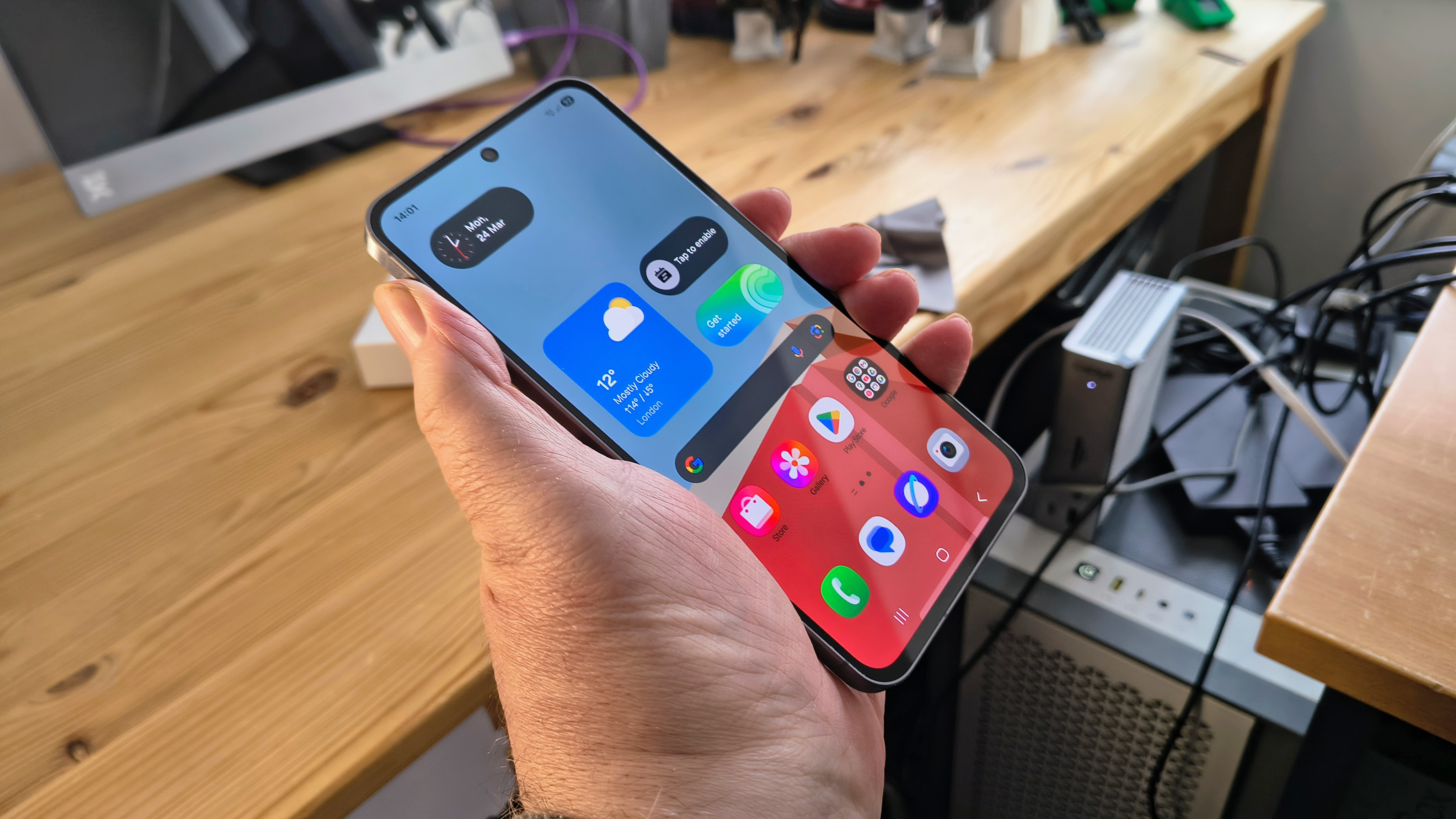
- Value score: 3.5/5
Samsung Galaxy A56 5G Enterprise Edition: Specs
Item | Spec |
|---|---|
CPU: | Samsung Exynos 1580 |
GPU: | Samsung Xclipse 540 |
NPU: | 6K MAC NPU 1066MHz (14.7 TOPs) |
RAM: | 8GB LPDDR4X (options for 12GB) |
Storage: | 128GB (options for 256GB), No MicroSD |
Screen: | 6.7-inch Super AMOLED 1200 nits |
Resolution: | 1080 x 2340 pixels |
SIM: | 2x Nano SIM + 2x eSIM |
Weight: | 198 grams |
Dimensions: | 162.2 x 77.5 x 7.4 mm |
Rugged Spec: | IP67 dust/water resistant (up to 1m for 30 min) |
Rear cameras: | 50MP (wide) + 13MP ultrawide + 5MP Macro |
Front camera: | 12MP |
Networking: | WiFi 6E, Bluetooth 5.4 |
OS: | Android 15 |
Battery: | 5000 mAh battery (Max 45W charge wired) |
Colours: | Pink, Olive, Graphite, Lightgray |
Samsung Galaxy A56 5G Enterprise Edition: design
- Thin and elegant
- Simplified button layout
- Nano SIM and eSIM
For those who experienced the A53, the new A56 isn’t a radical departure from the outside.
The A56 is unashamedly an iPhone-esque homage where a metal band loops around the outside of a glass and electronics sandwich.
Corning Gorilla Glass Victus+ glass on the front protects the 6.7-inch AMOLED display, and more of the same glass on the rear makes for a classy and elegant design.
The only thing messing with this clean vista is the projecting camera cluster on the rear, which stands a good 2.8mm proud of the rear surface. Given that the main body of the phone is only 7.4mm thick, the cluster makes the phone 38% thicker in that location.
On the Motorola ThinkPhone 25, which had a similar cluster projection, this projection was somewhat negated with a supplied bumper, which made it flush. Samsung chose not to include a bumper or power supply with this phone.
The Samsung engineers wanted a minimalist phone from a visual features perspective; therefore, other than the power button and the volume rocker, there are no other buttons to be found.
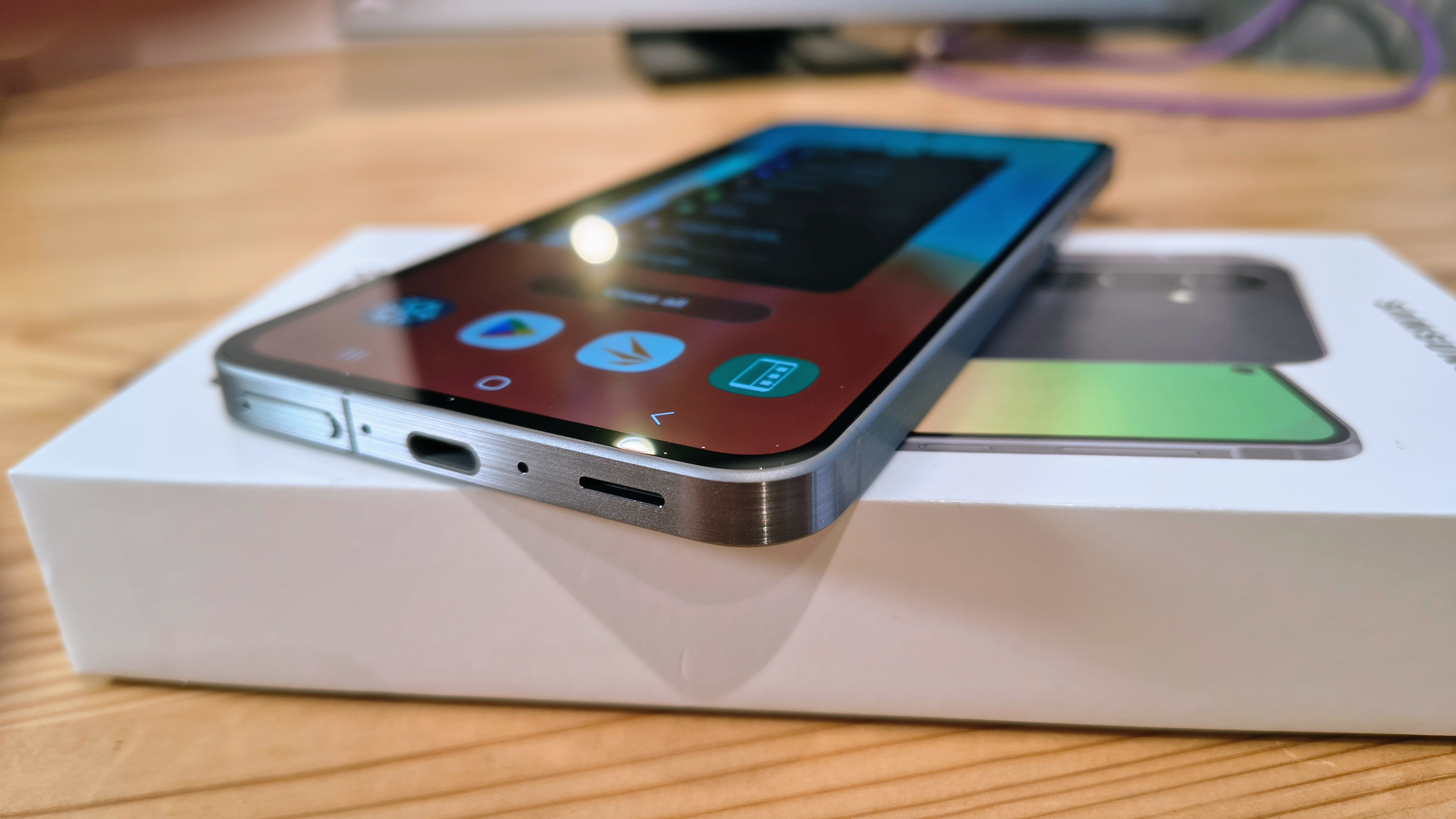
The only other external features are the USB-C port and a SIM card slot. There is no audio jack, and Samsung didn’t include a USB-C audio adapter for those who like wired headphones.
The SIM card can take two Nano SIMs, although this device can also utilise eSIM technology, with the limitation being that you can only have two phone numbers associated with the phone at any one time. There is no MicroSD card support, so the 128GB that the Enterprise Edition comes with is the total storage that this phone will ever have.
For those who like Samsung’s other Galaxy designs, there is relatively little to complain about here. With a bumper installed to make the camera cluster slightly less prominent, this will seem much more like a typical phone, and hopefully, the glass used on both sides is strong enough to take the typical abuse that a business phone should handle.
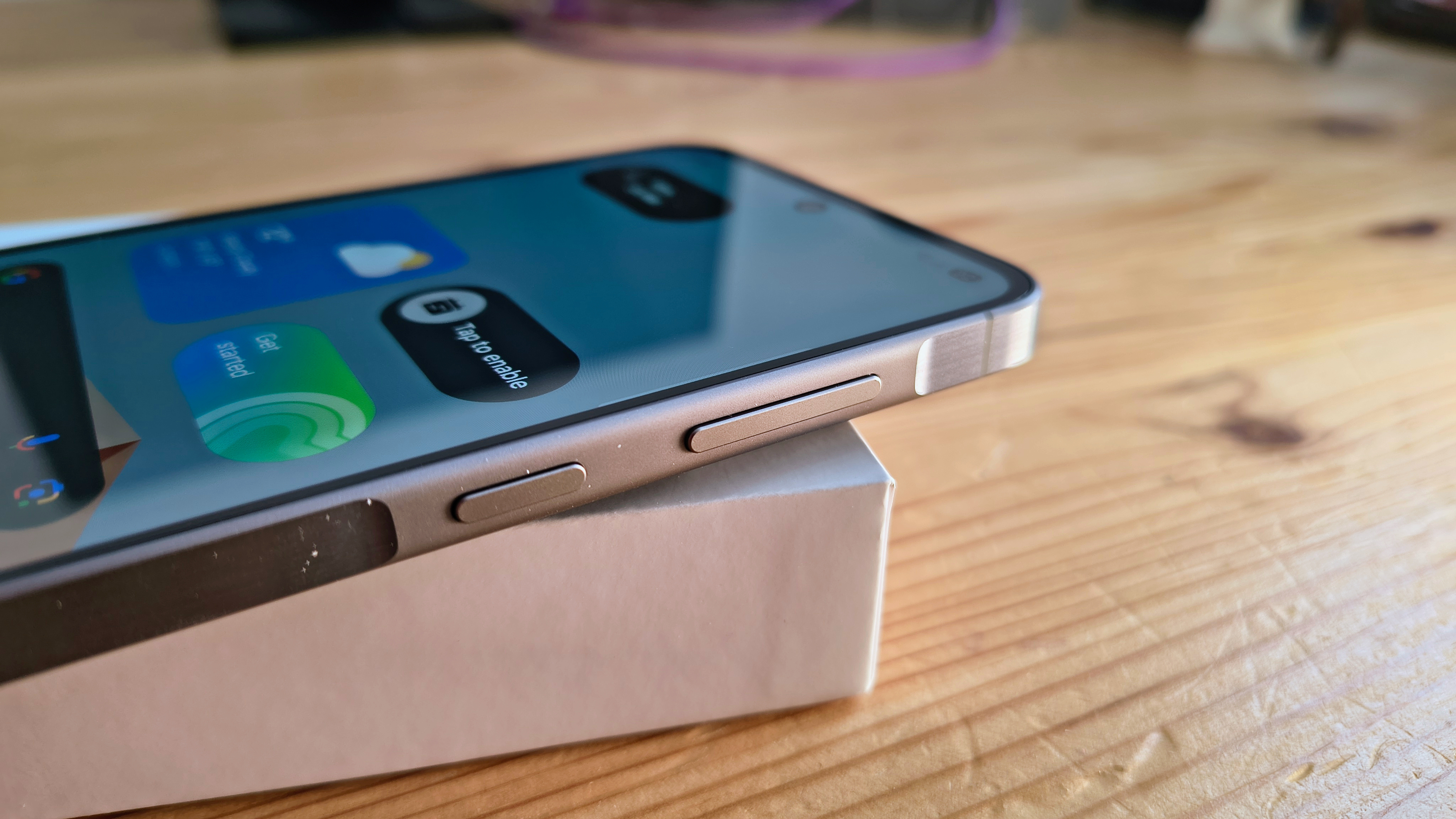
Design score: 4/5
Samsung Galaxy A56 5G Enterprise Edition: hardware
- Samsung Exynos 1580 powerhouse
- Stunning AMOLED display
- 5000 mAh battery
Samsung is one of the relatively few phone makers with its own SoC designs, and here, the Exynos 8855 is the system-on-a-chip package of choice.
This SoC offers eight cores in three clusters, only a portion of which are Samsung-designed. A single-performance Cortex-A720 core is clocked at 2.91GHz, and another two A720 cores run at 2.6GHz. Power efficiency is provided by the fine four Cortex-A520 cores that run at 1.95GHz.
This SoC uses the 4nm FinFET fabrication, which aligns with recent Qualcomm and MediaTek designs that use 6nm or 4nm process nodes. It also uses LPDDR5 memory, a significant improvement over cheaper designs that use LPDDR4X.
The GPU component is an Xclipse 540, an RDNA 3 graphics processor based on an AMD design. Not to spoil the benchmark results this early, but this graphics engine packs a serious punch.
The caveat to having such a powerful processor and graphics engine is that it uses more power than a less impressive combination, and if you want battery life, these chips might undermine that objective.
User experience is going to be significantly coloured by the sorts of apps they run and the demands these make on the SoC. The power of the Exynos 8855 makes the interface liquid smooth, and it is good for demanding games and simulations, but it is probably overkill for most standard apps that people run on Android.
Another high-end part of this device is the display, a 6.7-inch Super AMOLED panel rated at 1200 nits of brightness. That’s not the brightest I’ve seen, with some makers quoting 2000 nits for their panels. However, it is bright enough for most uses, including being outdoors, and it’s crisp in a way that makes many screens look blurry.
It can also be used in different colour modes; the default is ‘Vivid’ with an option for ‘Natural’. Under these settings, the white balance can be adjusted between cooler colours or warmer hues. While I’ve seen more excessive colour representation than even the Vivid mode on some screens, the colours on this phone have a good balance between them.
However, there is also an eye-comfort mode that the screen can be set to use, and if that’s active, control over the colour gamut isn’t possible.
Overall, the screen on the A56 is exceptional and goes some way to justify the cost of the device.
With rugged phones, the makers tend to go crazy by including a battery that could start a car, or they choose something less monolithic and talk about the portability of the phone.
Samsung took the latter path, giving the A56 a 5000 mAh battery, which is the size that a typical smartphone might have. While obviously, it won’t last the amount of time a 10000 mAh or 22000 mAh can, the A56 still manages to be under 200g in weight.
Therefore, it’s enough that the phone doesn’t need to be charged every day for most users, and the phone is a practical size and weight that users would reasonably expect.
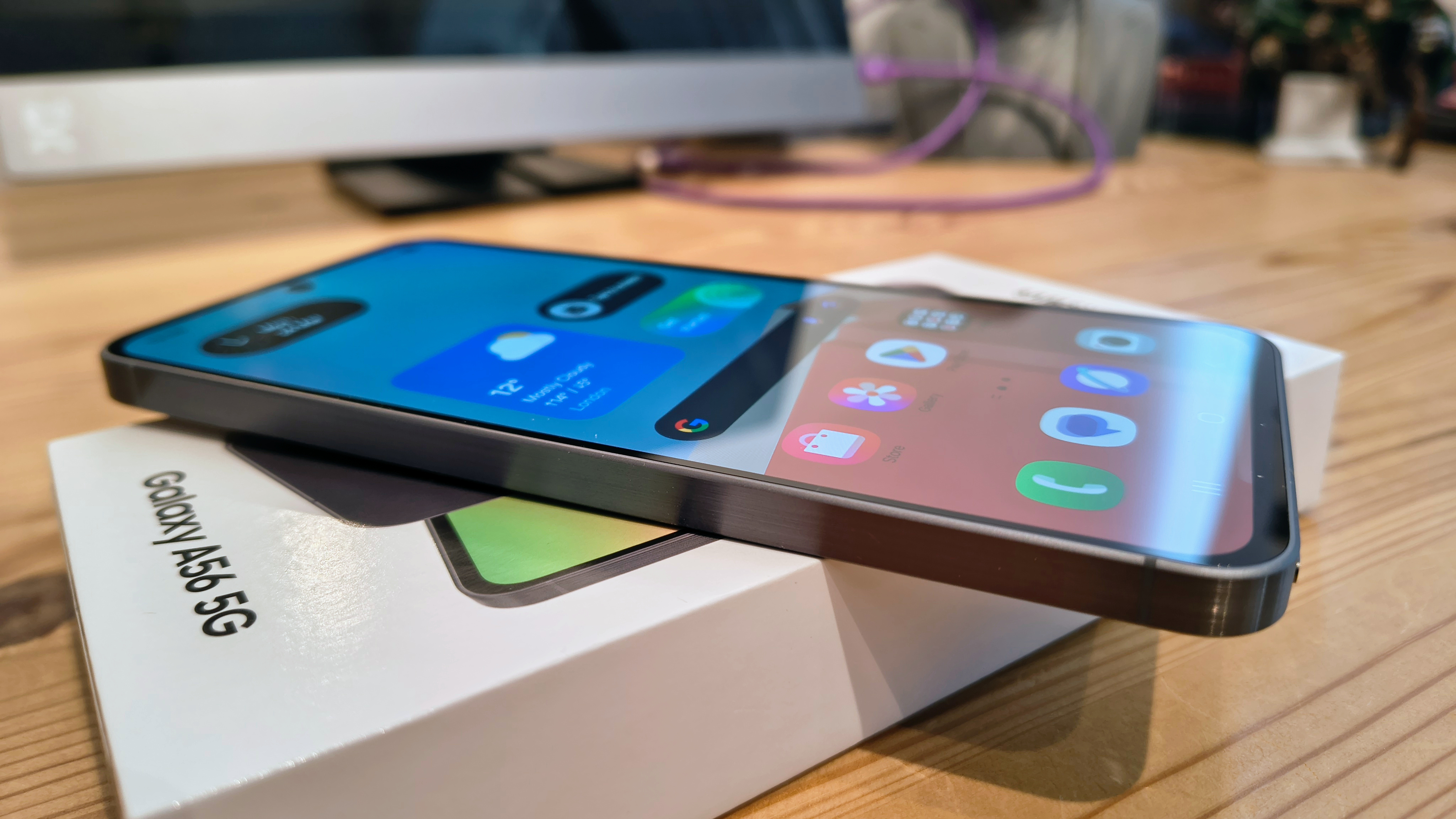
My only gripes about the battery are that there is no wireless charging, and the owner will need to buy a charger that can output 45W if they want to charge rapidly.
European laws dictate that phones shouldn’t come with a charger if they don’t need to, but in this case, one should have been.
The other hardware issue I need to mention is the SIM tray and the choices that Samsung made about it. As this phone uses eSIM technology, it isn’t necessary to open the tray since you can have two eSIM numbers without a physical card. But, for those who like to move SIMs around, the card tray accepts two Nano SIMs.
You can only have two numbers associated with the phone, so if you use both eSIMs, then the Nano SIM slots are redundant. In this circumstance, having one physical Nano SIM and a Micro SD card might have been a better plan, or at least an option.
In general, the build quality and hardware in the A56 are great, and I can see no reasonable complaint for a device that’s not a premium price.
- Hardware score: 4/5
Samsung Galaxy A56 5G Enterprise Edition: cameras
- 50MP and 2MP sensors on the rear
- 32MP on the front
- Four cameras in total
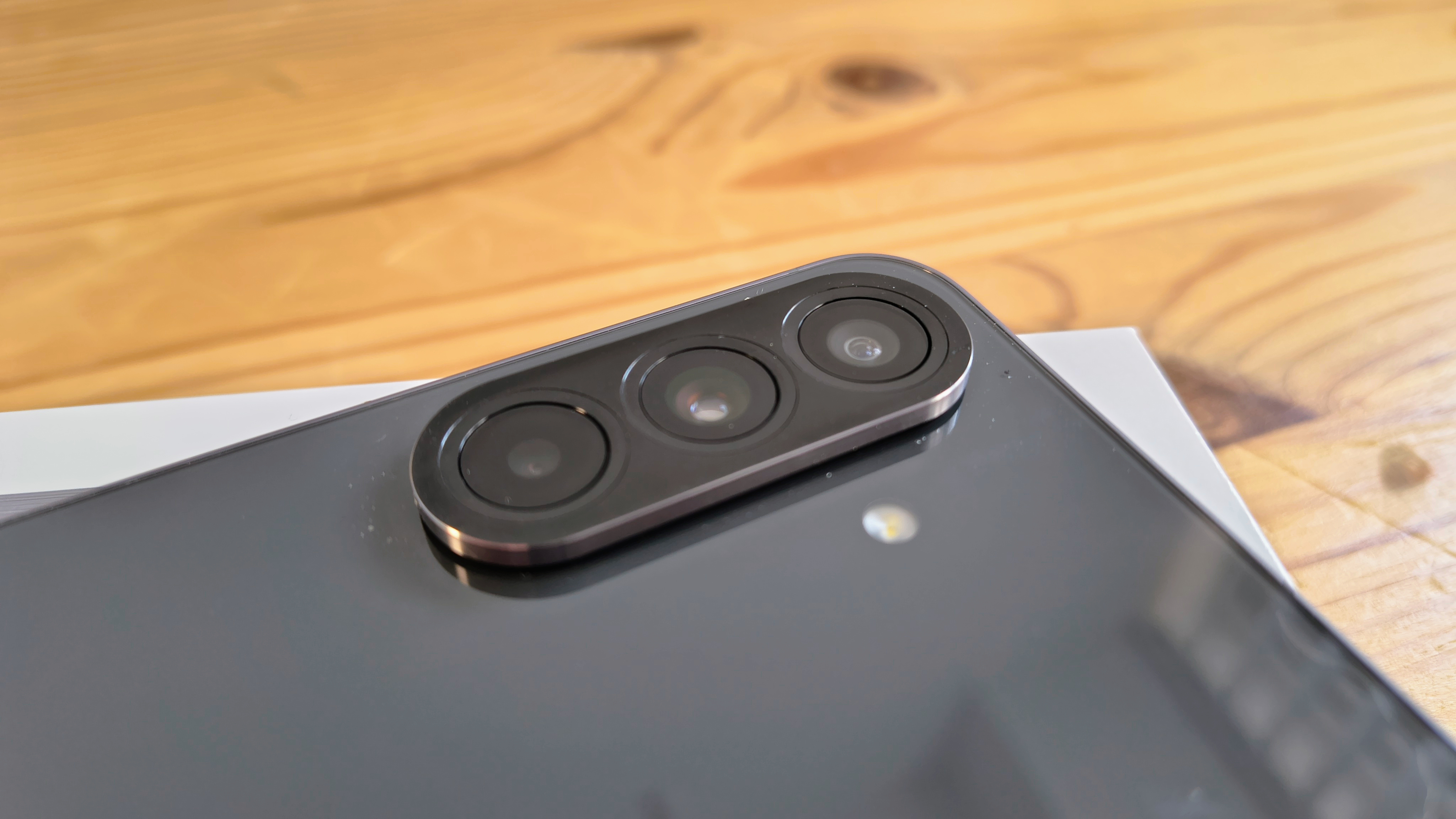
The Samsung Galaxy A56 5G Enterprise Edition has four cameras:
- Rear camera: 50MP Sony IMX906, 12MP Sony IMX258 Ultrawide, 5MP Macro
- Front camera: 12MP Samsung S5K3LC
I’m curious as to what corner has been turned on with rugged phones since last year. Then, the majority of them had poor camera sensors that lacked quality optics and the camera apps didn’t include the features the hardware offered.
Today, phones like the A56 have genuinely useful sensors that can capture good-quality images across a wide range of lighting conditions.
This is the first phone I’ve seen that uses the new 50MP Sony IMX906, a f/1.8 aperture, PDAF, OIS sensor, which can capture 4K@30fps video. 50MP might seem a little old-school, but the pixel-binning technology used to generate 12MP files can deliver some excellent results.
However, it has two tendencies that stop it from being exceptional. One is that under bright lighting conditions, it blows highlights. This exposure bracketing is most noticeable when the sun is high and is reflected around on cloudless days by shiny surfaces.
At the other end of the exposure range, in lower light conditions typically found indoors, the images tend to lack the colour punch of the outside captures, though not especially grainy.
This camera selection lacks a telephoto zoom; the only zoom on offer is a digital one that crops the primary sensor to provide a 2x equivalent.
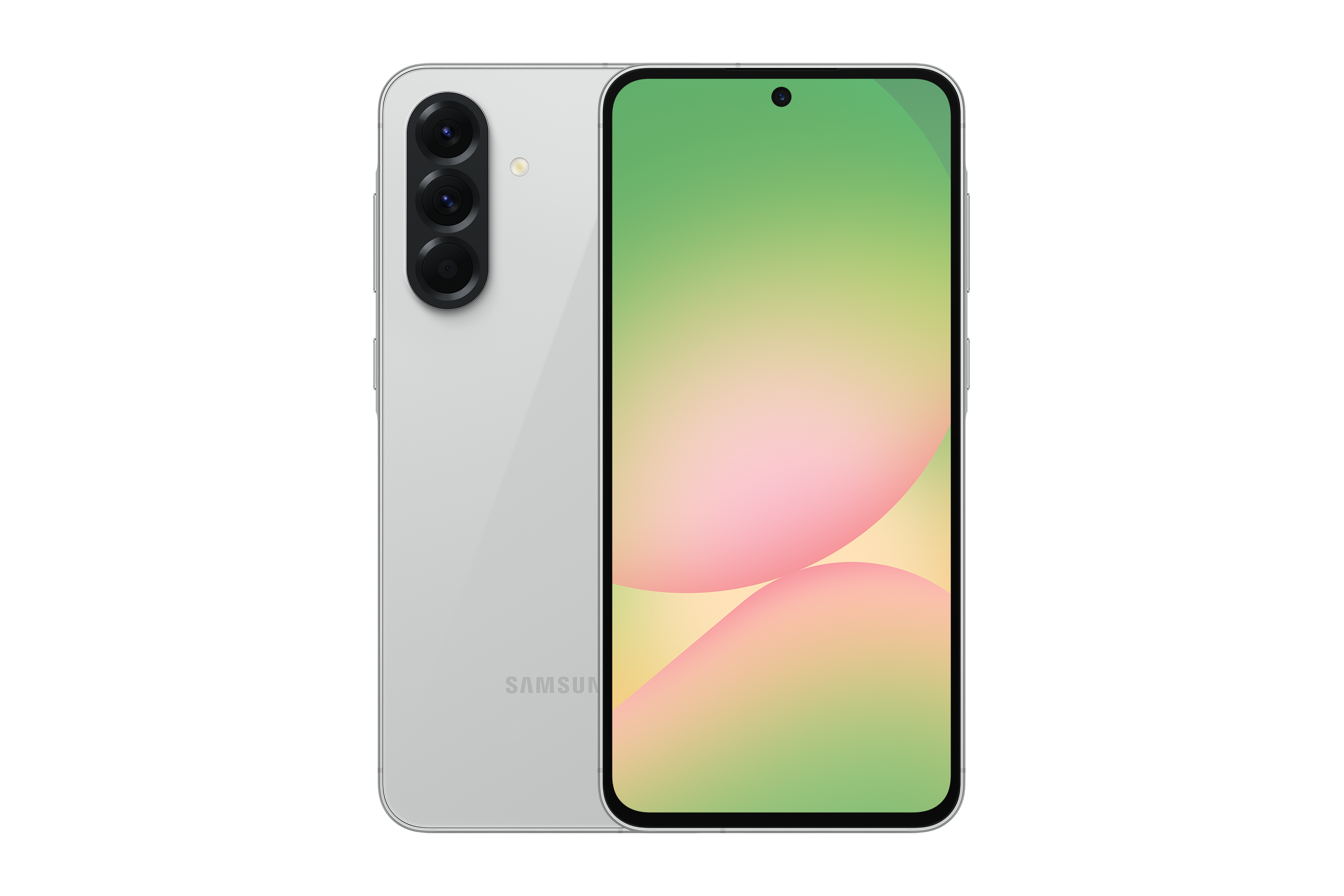
I think all the sensors in the rear cluster can work effectively in the right conditions, but the lack of an optical zoom is slightly damning. The Ultrawide sensor looks like it was included for those selling houses, but it is not strong enough to deliver saturated images with indoor shoots. Equally, you need excessive amounts of light to make the Macro 5MP sensor worth deploying.
It’s interesting to note that the previous model had a 32MP selfie sensor, and that’s being downgraded to 12MP in this model. Arguably, 12MP is more than enough pixels for this job, and it can still capture 4K video using the older Samsung S5K3LC.
Ironically, this might be the best sensor on this phone, with the results being much better than I’d expected. If you take lots of selfie images or use a phone for conferencing, this sensor is unexpectedly good.
Overall, the cameras in the A56 can yield good results and offer plenty of shooting modes, like slow-mo and hyperlapse. However, the rear sensors can be somewhat situational, and the results lack sharpness or muted saturation in the wrong conditions.
The stills and video of this phone aren’t bad, but some application work is needed to get the most out of some of the sensors, mostly the 50MP Sony IMX906.
Samsung Galaxy A56 5G Enterprise Edition Camera samples

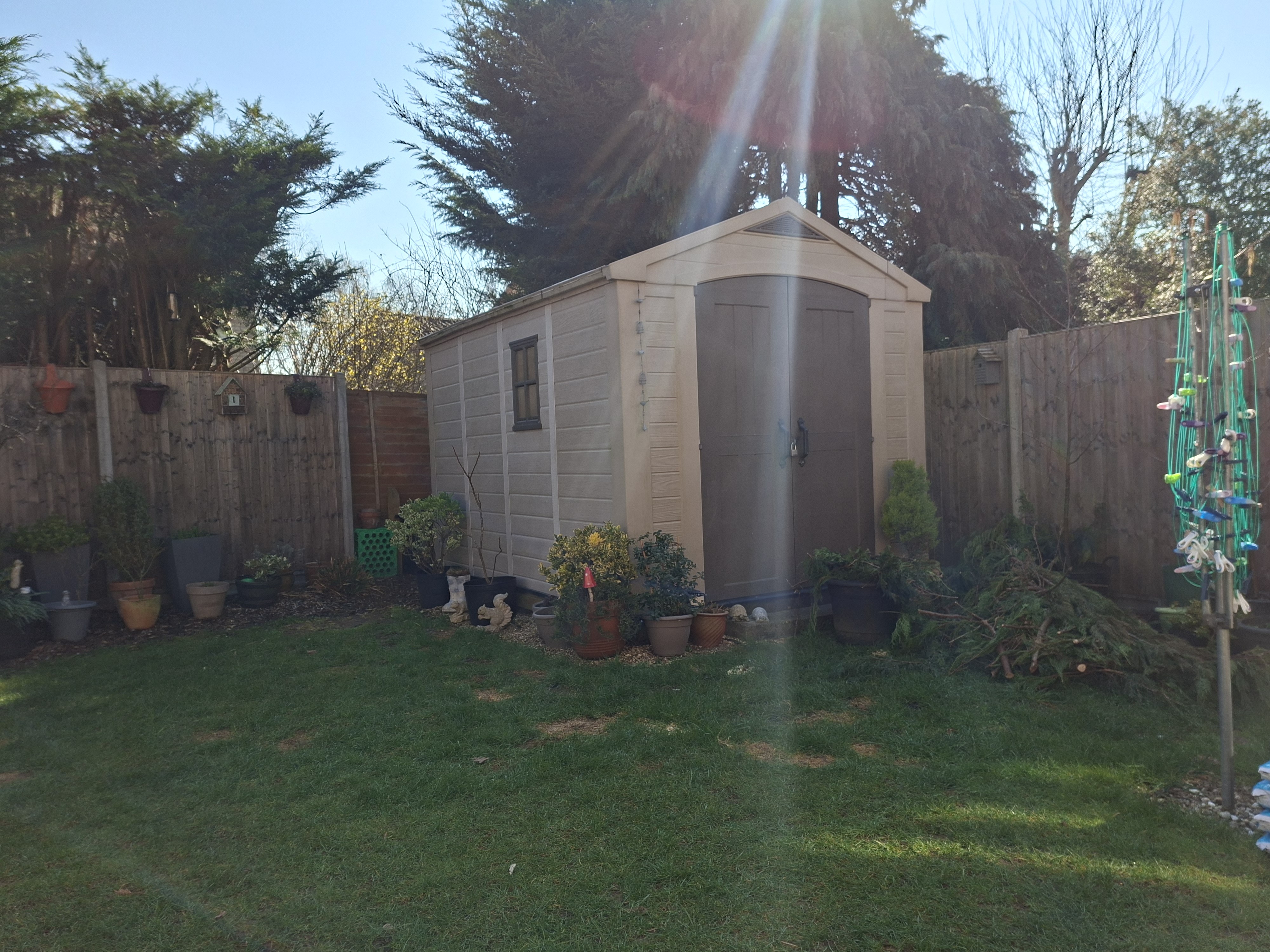




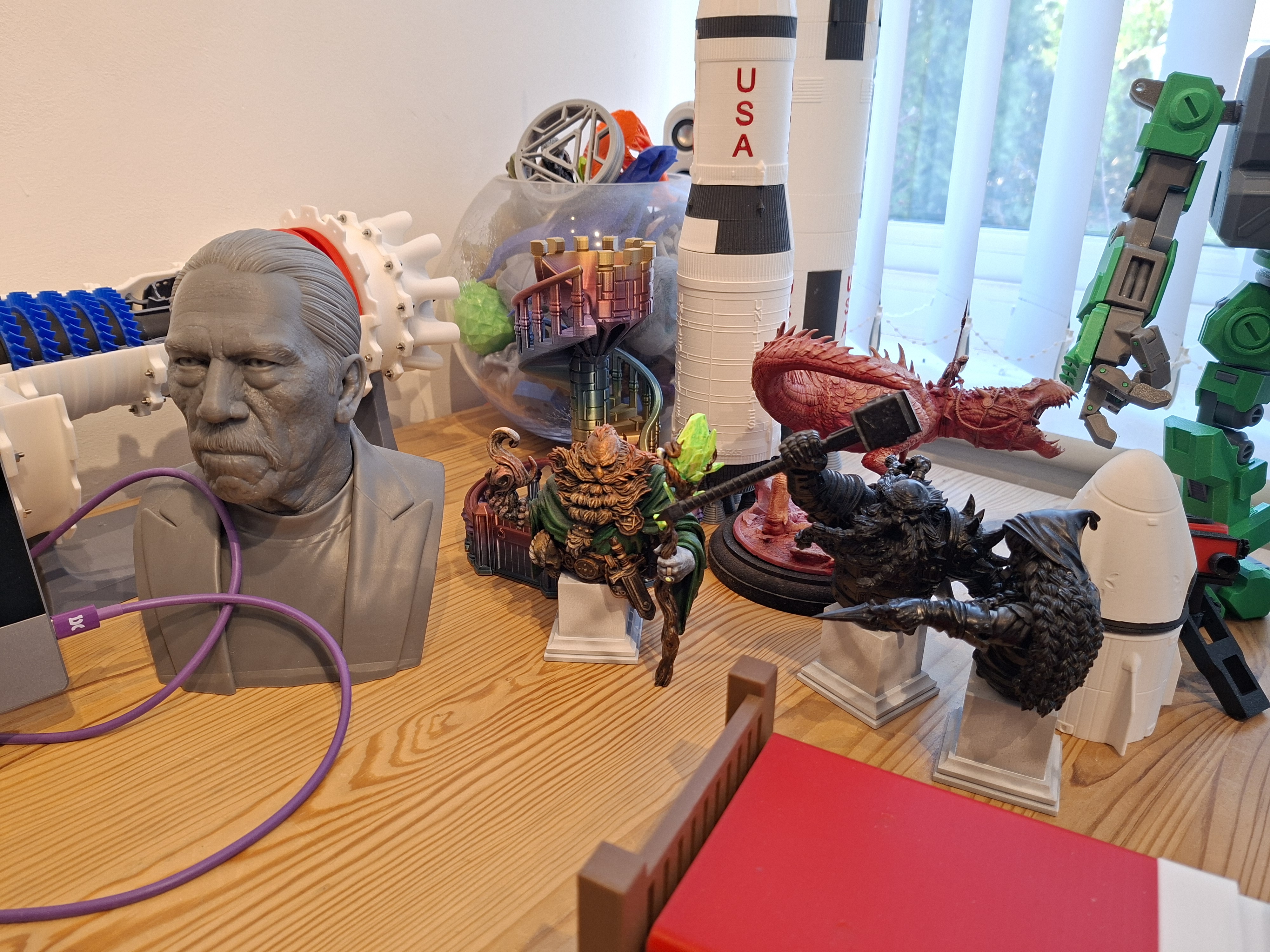
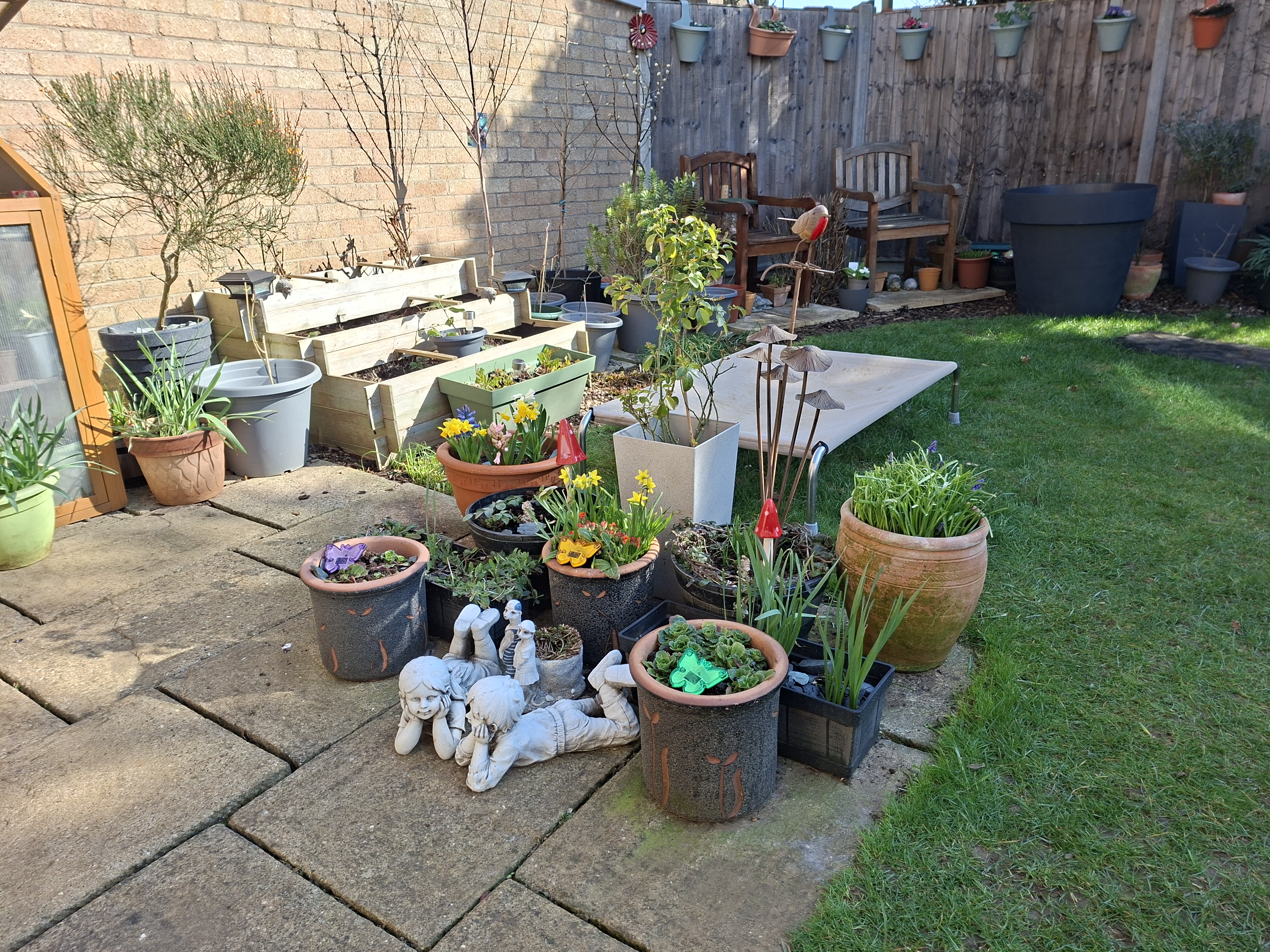
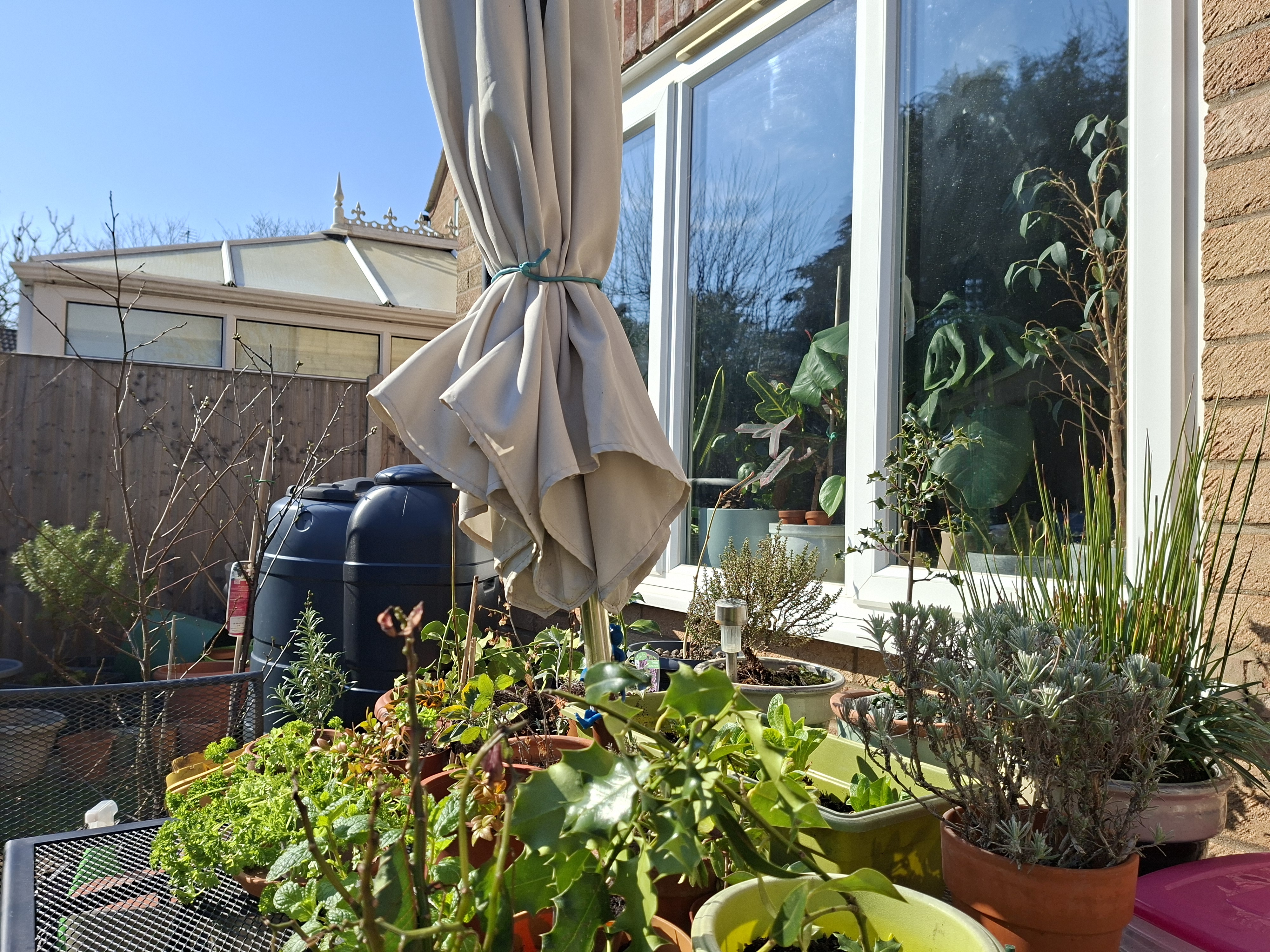
- Camera score: 5/5
Samsung Galaxy A56 5G Enterprise Edition: performance
- Powerhouse SoC
- GPU for demanding apps
- Two days battery life
Phone | Header Cell - Column 1 | Samsung A56 5G Enterprise Edition | Motorola ThinkPhone 25 |
|---|---|---|---|
SoC | Row 0 - Cell 1 | Exynos 1580 | Mediatek Dimensity 7300-Ultra |
Mem | Row 1 - Cell 1 | 8GB/128GB | 8GB/256GB |
Weight | Row 2 - Cell 1 | 198g | 171.g |
Battery | Row 3 - Cell 1 | 5000 | 4310 |
Geekbench | Single | 1337 | 1050 |
| Row 5 - Cell 0 | Multi | 3822 | 2998 |
| Row 6 - Cell 0 | OpenCL | 6502 | 2602 |
| Row 7 - Cell 0 | Vulkan | 6864 | 2527 |
GFX | Aztec Open Normal | 56 | 38 |
| Row 9 - Cell 0 | Aztec Vulkan Norm. | 64 | 40 |
| Row 10 - Cell 0 | Car Chase | 46 | 33 |
| Row 11 - Cell 0 | Manhattan 3.1 | 82 | 56 |
PCMark | 3.0 Score | 14287 | 15115 |
| Row 13 - Cell 0 | Battery | 14h 2m | 14h 21 |
Charge in 20 mins | % | 65 | 55 |
Passmark | Score | 10095 | 14125 |
| Row 16 - Cell 0 | CPU | 7950 | 7077 |
3DMark | Slingshot OGL | Maxed Out | 6090 |
| Row 18 - Cell 0 | Slingshot Ex. OGL | Maxed Out | 5037 |
| Row 19 - Cell 0 | Slingshot Ex. Vulkan | Maxed Out | 3676 |
| Row 20 - Cell 0 | Wildlife | 5125 | 3185 |
Having recently reviewed the Motorola ThinkPhone 25, a similar design, it’s interesting to see Samsung’s take on the concept of a practical rugged phone.
The A56 is slightly heavier, has a larger battery and less storage, and costs significantly more than its Motorola counterpart.
What that extra investment returns is a dramatically more powerful SoC, that provides an entirely new level of performance. Why was it downgraded on the PassMark and PCMark scores? I’ve no idea. Perhaps it was the amount of storage, but everything else the A56 owns. In some of the graphics tests, the benchmark ‘Maxed Out’ was so quick that it refused to return a score.
The one significant place that the Motorola phone edged the Samsung was in battery efficiency, delivering almost the same running time with less capacity. However, if you set the AMOLED display of the A56 down to the lowest brightness levels, where you can still read the screen, it is possible to squeeze 16 hours of use out of it.
That said, if you need extended battery life for a hiking experience, then neither of these phones is ideal. The A56 has an always-on mode that will burn battery life even if you don’t use the phone.
Two days of use is acceptable for general use, but you will need to carry a power pack if you intend to take this device off-grid.
The A56 is a powerful device that’s not too far removed from the performance that premium designs offer, making it a delight to use with demanding apps.
- Performance score: 4.5/5
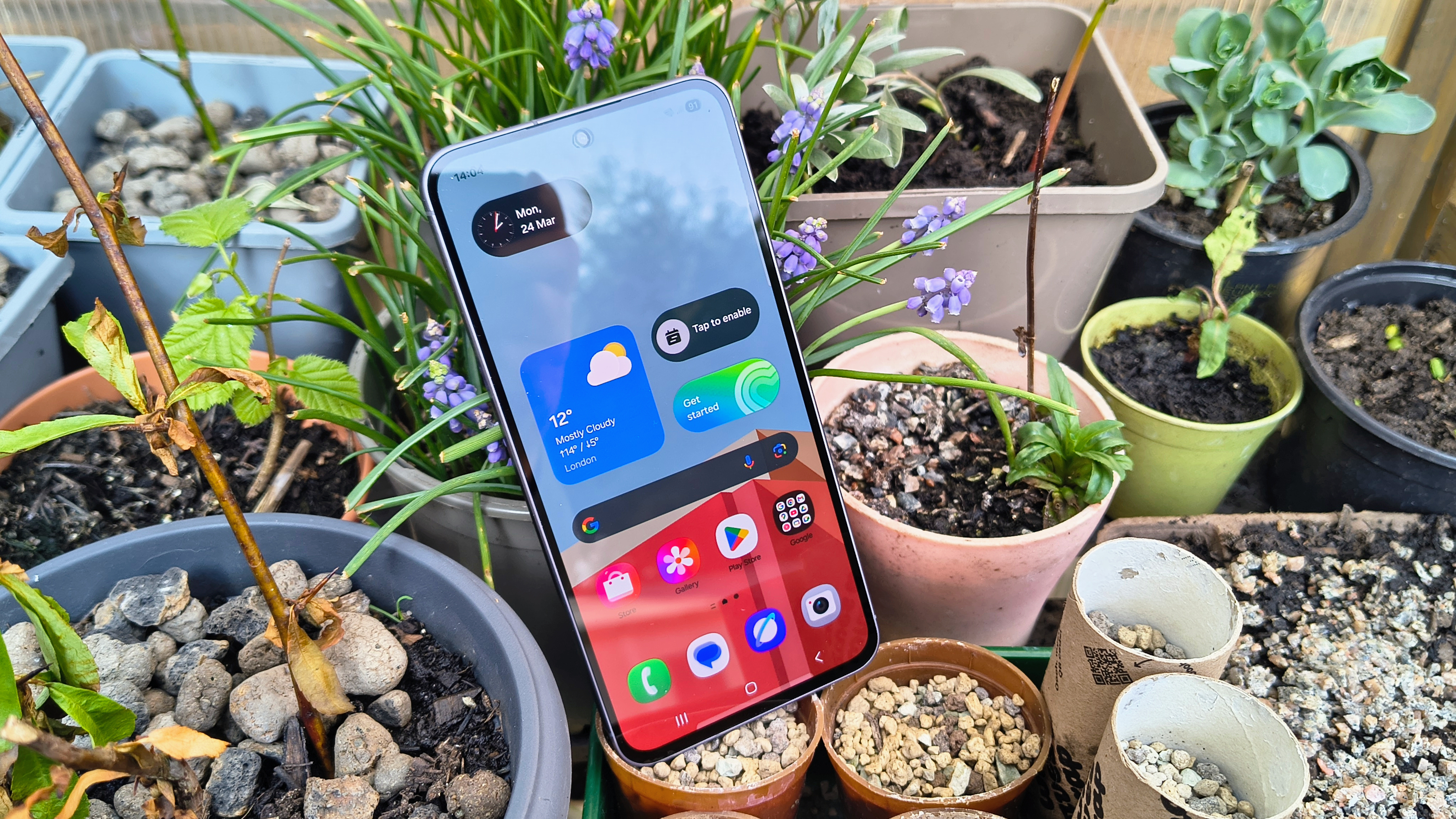
Samsung Galaxy A56 5G Enterprise Edition: Final verdict
Overall, the A56 is a decent phone that delivers both processing power and reasonable battery efficiency in a slick and attractive package. It might have been nice to include wireless charging, but the speed at which this phone can charge when connected undermines the need for that feature.
The only caveat to the charging speed is that Samsung doesn’t include a charger, and you will need to budget for one that can deliver the 45W that the A56 can accept to get that high-speed charge.
The software side of this equation is both a blessing and a curse. For those who have experienced a recent Samsung phone with Bixby, using this device is familiar territory, even if it’s running Android 15 now underneath the GUI. However, this phone has Samsung AI beside Google Gemini and, incredibly, Microsoft M365 Copilot.
This phone isn’t asking you to use just one of these; it’s desperate for the owner to use all of them.
Older readers will recall how Clippy rapidly became annoying when that appeared in Microsoft Office, but these AI reincarnations seem more irritating and overly persistent. I predict that the backlash to these features is brewing, as the makers won’t accept people don’t see the point most of the time.
Another specific Samsung problem is that the phone added a whole slew of apps that I never requested. It even put back a few that I removed. When I remove LinkedIn because I don’t use it, then I don’t expect Samsung to magically reinstall it, as I’d obviously made a mistake. Just don’t.
Given that this Enterprise edition comes with only 128GB of storage and is likely to have its app selection remotely controlled in many businesses, having the OS act this way isn’t helpful.
I think choosing the Enterprise version is largely pointless over the standard 256GB models unless saving a few dollars can be multiplied by thousands with a bulk purchase.
The positive side of the software equation is that Samsung has promised six years of updates for this phone, making it supposedly secure and concurrent up to 2031. Six years of updates assumes that Google doesn’t increase memory and processing requirements that exclude the A56. That seems unlikely.
Those over-reach issues aside, the A56 is a good piece of equipment that is perfect for those who have an occupation that often takes them outside, and in some respects, it’s even better than the excellent Motorola ThinkPhone 25.
But then, as the Motorola ThinkPhone 25 only costs £299 in the UK, and the A56 Enterprise Edition is £450, the expectations for it are more significant. However, this isn’t a choice for American customers because the ThinkPhone 25 isn’t released in that region, whereas the A56 will be.
If a price point closer to $400 for the Enterprise Edition can be achieved, I think it would sell well to business customers.
Should I buy a Samsung Galaxy A56 5G Enterprise Edition?
Attributes | Notes | Rating |
|---|---|---|
Value | Not cheap, but not excessive considering the spec | 3.5/5 |
Design | Thin and elegant, but can handle dust and water | 4/5 |
Hardware | Nano and eSIM, HDR10+ AMOLED display | 4/5 |
Camera | New Sony IMX906 sensor, but it lacks an optical zoom | 4/5 |
Performance | Samsung Exynos 1580 and Xclipse 540 is a winning combo | 4.5/5 |
Overall | A practical and effective design with a few minor flaws | 4/5 |
Buy it if...
You need a phone for outdoors
The water and dust resistance on the Samsung Galaxy A56 5G is good enough to work in the rain and handle being dropped. It doesn’t have annoying rubber plugs that can wear out, although I’d be careful putting it underwater.
You want a rugged phone that fits in a pocket
Some ridiculous phones are being sold that won’t easily fit in a pocket and weigh excessive amounts. The Samsung Galaxy A56 5G is a practical phone design that is no larger or heavier than a typical premium phone design but with a rugged phone’s water and dust protection.
Don't buy it if...
You want extended battery life
If the phone is used continually, it should give you two working days, but that’s about its limit. Therefore, it isn’t ideal for a camping trip that lasts a week. But, if you take a Power Station with you, this phone will charge rapidly.
You carry lots of data or apps
The Enterprise edition comes with 128GB of storage, half the typical 256GB that most phones now come with. If you carry lots of data or need to record plenty of video, this could become an issue. Sadly, the SIM tray doesn’t accept a MicroSD card, so there is no way around this limitation.
Also Consider
Ulefone Armor Mini 20 Pro
Another practical, rugged design with an inbuilt camping light, night vision camera and about 25% more battery capacity than the A56. It’s also dramatically cheaper, but conversely, the cameras aren’t as good, and the SoC isn’t as powerful. For those needing a cheap, tough phone, the Ulefone Armor Mini 20 Pro might be a good choice.
Read our full Ulefone Armor Mini 20 Pro review
ThinkPhone 25 by Motorola
A recently launched second-generation design, the ThinkPhone 25 offers a robust package, practical form factor, high-quality camera sensors and decent battery life at a mid-range price point. But, it’s not available in the USA, sadly.
Read our ThinkPhone 25 by Motorola review
For more durable devices, we've tested the best rugged tablets, the best rugged laptops, and the best rugged hard drives
Mark is an expert on 3D printers, drones and phones. He also covers storage, including SSDs, NAS drives and portable hard drives. He started writing in 1986 and has contributed to MicroMart, PC Format, 3D World, among others.
You must confirm your public display name before commenting
Please logout and then login again, you will then be prompted to enter your display name.
